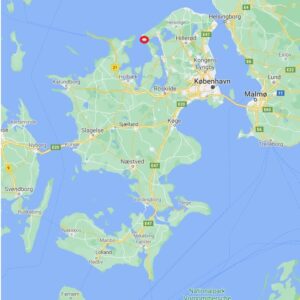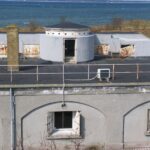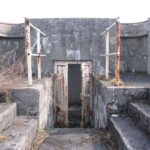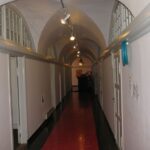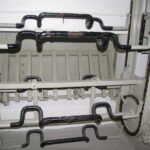The Lynäs Fort was built during the years 1914 to 1916.
It is a concrete casemate building containing depot, crew room, mine station, etc .
The fort was surrounded by a wet moat, which was protected by a caponiere with machineguns at the northern end of the moat. On the north and east sides, there are ramparts with concrete machinegun positions.
A bridge on the south side gave acces to the fort.
The Lynäs Fort was supposed to protect the minefields at the mouth of the Isefjord and preventing the entry of enemy units into the Isefjord and the Roskilde Fjord.
The artillery was located on top of the casemate building. It was lined up on concrete emplacements with a main firing direction from northwest to southeast.
The main armament of the fort in 1918 consisted of two 120 mm cannons, four 75 mm cannons and 24 machine guns.
It was staffed by 200 artillerymen from the coastal Artillery Forps.
They were for the most part accommodated in the barracks outside the fort itself.
In 1949, the fort ceased to be a active battery and became a education fort for the coastal Artillery Corps.
In 1962, the fort was decommissioned.
Today it is private property.
The exterior
- The Bridge to the fort
- The throat
- The caponiere in the throat
- Observation post
- The firing control
- The battery
- Machinegun post on the rampart
- The caponiere in the moat
The Interior
- Accomodations
- The grenade elevator
- The Engine room
- The caponiere in the moat
- The caponiere in the throat
- Mount for machine gun
- The firing control
- measurement of degrees in the firing control

